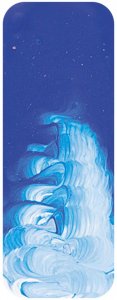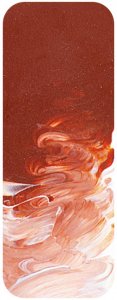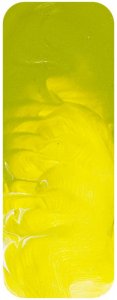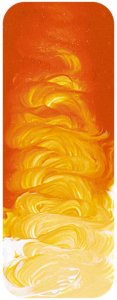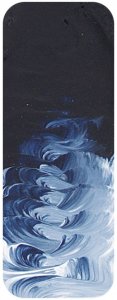Description
"For millennia people saw the variations in yellowish earths as being the nature of things and little or no differentiation was made between colours we see as being quite distinct such as Yellow Oxide and Raw Sienna or Raw Umber. Because ancient artists were often painting on bare rock surfaces they probably found the slightly darker tone of Raw Sienna was beneficial when painting as in many places it would show up better on cave walls while a lighter yellow might work better in another location. Ether way they were all regarded as simply Yellow Oxide. It was the ancient Greeks and the Romans in the Roman period who began to value the various yellow earths for their variations to paint alongside each other and developed the desire to use each for the subtlety of colours in landscape. Thus it was the Italian earths which they were using would become the standard colours that we still use today. The colour we now call Raw Sienna was known in earlier times as Terra di Siena - the earth of Siena because it was around Siena that large deposits of this colour were found. The deposits used since Roman times finally became depleted in the 1940???s and now the major sources of the pigment are in Sardinia, Sicily, and in the eastern United States. It is browner than Yellow Oxide and matches the many brownish yellows found in nature. Its distinctive colour was formed over a long period of time with most of the deposits being from the precambrian period which ended 542 million year ago. Being a natural product this colour is represented by a range of colour variation just as natural Yellow Oxide is and the variation is so great that the two pigments overlap and it is a moot point as to whether or not the brownest versions of Yellow Oxide should really be called Raw Sienna, and conversely whether the yellowest shades of Raw Sienna should really be called Yellow Oxide. It is this uncertainty which is the reason why the Raw Sienna made by Matisse is officially designated as PY43 - which is the colour index name for natural Yellow Oxide.
Matisse chooses its pigments based on the beauty of the colour and how well it works with the other pigments used in the range. In the case of Raw Sienna the colour is a Raw Sienna of extraordinary beauty. it is warm with a delicious undertone. Many manufacturers provide a weak and uninspiring Raw Sienna and as a consequence it is often a colour not used very often. Matisse Raw Sienna, on the other hand, is a very popular colour which proves to be very useful on the palette. It has the richness is oiled timber and with Burnt Sienna and with Raw and Burnt Umber creates the majority of the brown colours found in nature.
Raw Sienna type colours abound in the natural world and often this colour is used with only small modification but it has many roles to play. Mixed with Cadmium Yellow Medium it makes the golden colours of wheat fields or mixed with Matisse Emerald it makes beautiful olive greens and a colour surprise is found by mixing it with Magenta light. The warm light tans that mixture makes is quite unlike any other because of the pinkish component to the colour. Raw Sienna has been used for at least 30,000 years and yet it is as fresh and useful a colour today as it was to an artist from all that time ago.
"

